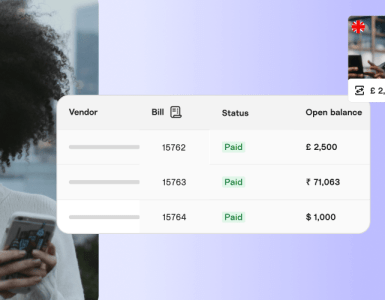It’s a known fact that companies have become more receptive than ever to giving projects to freelancers for their day-to-day business operations.
This shift in the workforce is a result of tight capital expenditures owing to the pandemic, as well as the ability to reduce liabilities by only paying for work as and when it’s needed.
This also means that there’s an increased competition in the freelancing space, which means stepping up your game is more vital than ever.
In this guide, we’re offering up 6 killer tips on how to be a successful freelancer:
Define Your Niche
Remember:
If you try to be everything for everyone, you will be nothing for anyone.
A lot of individuals (especially newbies) try to offer a lot of different services at once just to get hold of a project.
Being a T-shaped freelancer is actually a good thing and a necessity of the day, but, that doesn’t necessarily mean that you need to offer all the possible services of the breadth.
This actually diverts your focus from what you’re actually good at.
Let’s say you’re an animation designer and have gained immense expertise in this area by working in the field for a sustained period of time:
The logical thing to do here would be to portray yourself as an expert in this niche rather than showcasing a host of other skills that you might know (like photoshop, illustrator, etc.)
In such a situation, the person on the buying side might get confused and may not be able to figure what particular skill you’re really good at. This might cause the client to start looking at other options.
You can showcase your expertise by giving the perfect value proposition to the prospect. For example, an animation banner that needs to go up on the homepage of a website.
Ask yourself: why would a company need something such as an animation banner?
To get more retention on the website, for ease of understanding of the company’s offerings and the brand association factor that is associated with the banner. Therefore, the next time a visitor thinks about your client’s company, they recall the banner they’d seen during their last visit).

Understand The Flow Of Things
Being proactive in learning about the flow of things in a company’s strategic plan would be an added plus.
As we discussed above, animation banners are super popular and widely used in a lot of new website’s homepages, landing pages, etc.
Let’s say a PPC strategist comes to you for a banner requirement for a new landing page they’re trying to build for their company’s upcoming products/services:
In such a scenario, you could follow this process:
- Understand the client’s product/service and then design the banner accordingly that would retain the attention of their target audience.
- Do some competitor analysis and understand if the competitors are using banners (and if they are, understand what the strengths and weaknesses of the competitor’s banners are).
- Optimize the banner for maximum page speed (thereby improving user experience.)
- Make A/B testing available for the client by providing a set of multiple banners.
In this case, the client would likely be extremely delighted to see such a thorough process in place and feel that you’ve gone the extra mile for them.
Communicate Consistently
Consistent communication is extremely important in any kind of environment, be it a job, freelancing, or life in general.
Whenever you take up a project, keep your client updated on what set of activities you’re going to perform and the timelines by which they’re set to get completed.
This helps to streamline things and prevents you from having to chase each other for updates on the project.
Upgrade Your Skills
Schooling doesn’t assure employment, but skill does.
Just like you update apps on your phone every week to get the best experience out of them, updating yourself to give the best service to your customers is extremely vital too.
Not only does it boost your confidence, but it also helps you handle tasks more effectively than your competition.
Online learning is now bigger than ever and there are tonnes of highly valuable online courses on platforms such as Udemy, Coursera, etc. These short courses can help you go to the next level without burning a hole in your pocket.
Seek training in digital marketing, machine learning, artificial intelligence, data science and other high-growth areas. If your budget doesn’t allow for a dedicated course, there are plenty of free resources online to get started, particularly on platforms such as YouTube.
Even if you don’t offer these services directly, maintaining a good working knowledge of each sector can be quite handy since you’ll likely be dealing with clients who work in these industries,
Remember:
Failing to learn is learning to fail!
Increase Your Credibility
Just like you’d Google reviews on a particular product or service that you’d like to buy, a prospective client might do some research of their own too before handing over a job to you.
The best way to increase your credibility is to create your own blog showcasing your experience in your niche by giving out tips and tricks, doing product/service reviews or conducting AMA sessions.
You can also have a client testimonial page that showcases what your clients say about you, as well as a solid social media presence for your services.
A combination of all of these things makes the decision-making process much easier for prospective clients and massively increases your chances of conversion. Invest in social media management with strategies like influencer partnerships, cross-promotions and advertising if you can afford it to build authority in your area of expertise.
Know Your Business
Being an expert in your field is always going to keep you in demand. However, knowing how to handle negotiations, staying ahead of the competition, and positioning yourself in the market is what will keep you afloat in the long run.
A lot of freelancers make the mistake of keeping the ball in the prospect’s court and let them steer the negotiations/price discussions.
How to price yourself as a freelancer (whether on an hourly rate or a fixed project basis) is something you’ll come to know as you get a few projects under your belt.
For example; a website designer who is extremely skilled in their work might be able to complete the job within a matter of a couple of hours.
Another designer, who is not as skilled, might take a few extra hours to finish the job.
By being able to deliver the job in a significantly shorter period of time, not only are you saving the client’s time but also, positioning yourself as a person who is highly skilled. This will allow you to increase your rates and obtain more client work in the process.
Wrapping Up
Freelancing is not just about finding gigs every now and then and fulfilling the orders.
It’s more about a journey that you go through and learning a host of different new things which change you as a person and help to develop your character.




